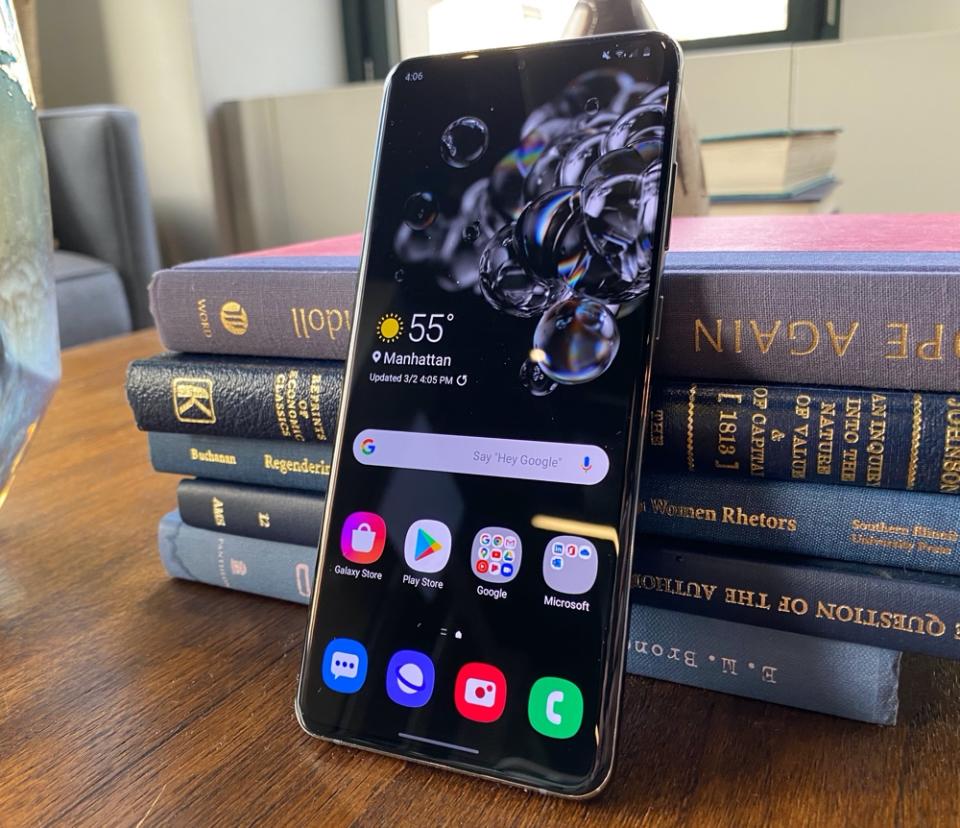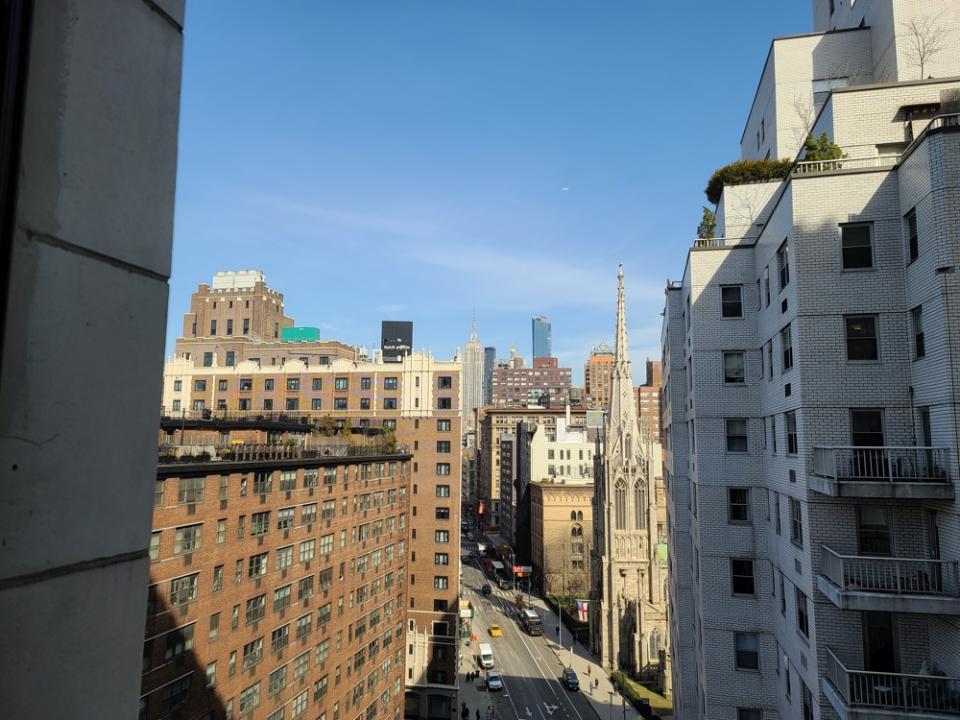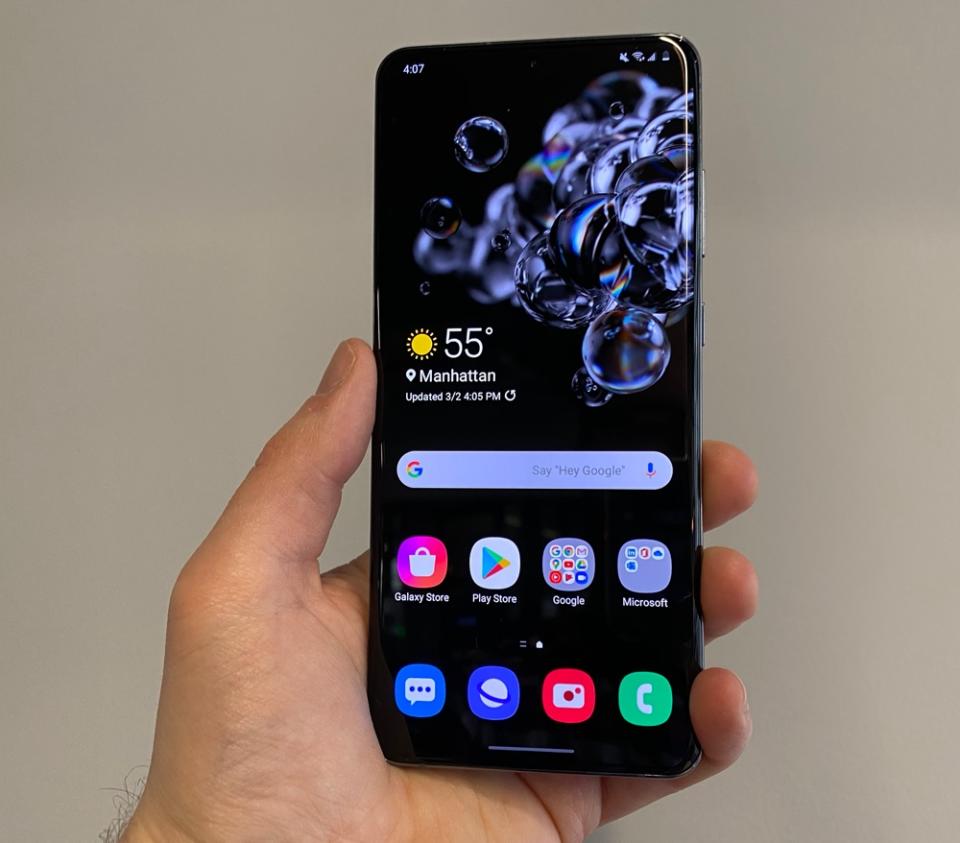Samsung Galaxy S20 Ultra review: A $1,399 smartphone with a massive camera
Samsung’s latest flagship Galaxy smartphone has landed, and the impressive phone packs some flashy new features that are sure to attract Android fans in need of an upgrade.
Available March 6, the Google (GOOG, GOOGL) Android-powered Galaxy S20 comes in three pricey flavors: the $999 base S20; the $1,199 S20+; and the top-of-the-line, $1,399 S20 Ultra. Each phone comes with 5G connectivity standard, a first for Samsung’s lineup and a move all brands are sure to follow.
I got my hands on the top dog S20 Ultra, which sports an absolutely massive camera bump complete with an over-the-top 100x zoom. It’s a heck of a smartphone, but its biggest selling point, that camera, isn’t a must-have. Here’s what the phone offers:
$1,399 starting price
Qualcomm (QCOM) Snapdragon 865 processor
12GB/ 16GB of RAM
5G connectivity
100x Space Zoom
What you get with each phone
The S20, S20+, and S20 Ultra are more alike than not despite their price differences. Each phone packs a Qualcomm Snapdragon 865 processor, and can be outfitted with 12GB of RAM and 128GB of storage. The S20+ comes with up to 512GB of storage, while the S20 Ultra can be upgraded to 16GB of RAM and 512GB of space. No matter which version you choose, you’re going to get a powerhouse of a smartphone.
Each phone also comes in three different sizes. The S20 features Samsung’s 6.2-inch Infinity-O Display, while the S20+ gets a 6.7-inch panel and the S20 Ultra gets a massive 6.9-inch screen. To put that in perspective, the Ultra is taller than the iPhone 11 Pro Max and its 6.5-inch panel, but not by much. Still if the Pro Max is too big for your pocket, the S20 Ultra is definitely not going to fit.

Like Samsung’s S10 line, the S20’s displays cascade off the sides of the phones. But this time around, Samsung made the curve of its screens less dramatic; that’s a welcome change, as the previous look was beginning to feel stale. I’m still more of a fan of flat screens like the one found on Samsung’s Galaxy S10e, but the S20’s panels are still stunning to behold.
Each of the S20s also gets faster display refresh rates. A refresh rate is the speed at which information on the screen updates. The base rate on the S20 line is 60Hz, or 60 updates per second, but you can increase that to 120Hz, making for far smoother animations and a generally more appealing experience.
The problem, however, is that the extra oomph needed to power that bump in refresh rate will eat into your phone’s battery life. So if you’re looking to get the most out of a charge, stick to the 60Hz refresh rate.
Those cameras
Outside of their sizes, the biggest difference between the S20 and S20+, and the S20 Ultra is their cameras. Both the S20 and S20+ get wide-angle, ultra-wide angle and telephoto lenses with a 2x optical zoom that can boost up to a 4x hybrid optical zoom that Samsung says uses sensor cropping to capture photos with lossless zoom. The S20 Ultra, on the other hand, has an up to 10x lossless zoom.

Then there’s what Samsung calls Space Zoom, which uses software that gives the S20 and S20+ an up to 30x zoom and the S20 Ultra a whopping 100X zoom.


Since I used the S20 Ultra, I can’t speak to the S20 or S20+’s capabilities, but the S20 Ultra’s were a mixed bag. As other outlets have reported, and I experience, the S20 Ultra’s autofocus can be finicky, going in and out of focus, before settling on a subject.
Shots taken at a distance with between 1x and 4x zoom looked clean and crisp, with vibrant colors and sharp details. You’ll end up taking photos using these zoom levels most often, so it’s good to see they look great. Macro shots, however, had far too much natural bokeh, depth of field blurring, for my liking.
The 10x lossless zoom is able to capture images from distances far greater than the iPhone, but I noticed that photos looked smoother than normal, with fine details blending together.
The 100x Space Zoom on the Ultra is more of a party trick than something you’ll use on a daily basis. Sure, you can zoom in on subjects at huge distances, like I did when zooming in on a crane that was barely visible from my office window — but your photos will invariably come loaded with artifacts and pixelation.
5G when you can find it
The S20 line is Samsung’s first to come with 5G connectivity standard. But there’s a major caveat: The standard S20 only offers Sub-6 5G, while the S20+ and S20 Ultra get Sub-6 and millimeter wave 5G.
That’s important because it means the base S20 won’t have access to those super-high speeds promised by millimeter wave 5G.

Sub-6 5G refers to 5G networks that run on frequencies below 6 gigahertz. Sub-6 5G is modestly faster than 4G LTE, and offers exceptional range. But it isn't anywhere near as fast as the 1 gigabit per second speeds offered by millimeter wave 5G. Millimeter wave, however, is limited to short distances. Think blocks rather than miles.
It’s good to see that 5G is standard on these devices, with the exception of the lack of millimeter wave on the S20, but connecting to 5G is still a crapshoot since the major U.S. carriers, including Yahoo Finance’s parent company Verizon, are still in the midst of building out their networks.
In other words, don’t expect to jump on 5G the moment you get your S20. It’ll take time for the carriers’ new networks to reach the same level of saturation as their current 4G LTE offerings. So until then, you’ll run on 4G as usual.
Should you get it?
The S20 Ultra is a statement piece. You pull it out, with its huge camera bump and massive display, to show that you can afford a $1,400 smartphone. And while it’s nice to have such a giant display, it’ll likely prove too large for most consumers.
That, coupled with the fact that the 100x Space Zoom isn’t a necessity and that the camera’s autofocus is wonky, leads me to believe that the majority of potential customers will opt for the S20 or S20+ rather than the Ultra. Still, if you’ve got the cash to burn, and want the world to know, the Ultra is certainly a powerful way to do so.
More from Dan:
‘We’ll have the first global cyber warfare this year’: Nouriel Roubini
Apple CEO: We’re willing to sacrifice return on investment for customer satisfaction
Got a tip? Email Daniel Howley at danielphowley@protonmail.com or dhowley@yahoofinance.com, and follow him on Twitter at @DanielHowley.
Follow Yahoo Finance on Twitter, Facebook, Instagram, Flipboard, SmartNews, LinkedIn, YouTube, and reddit.

